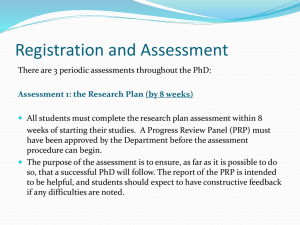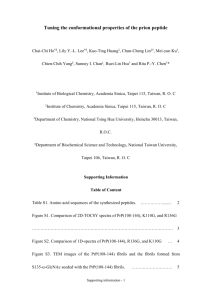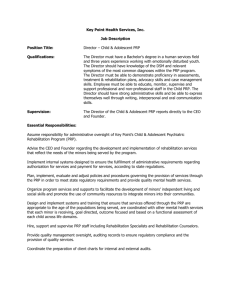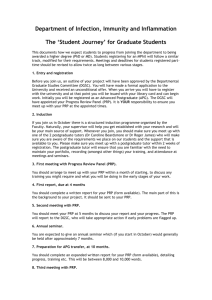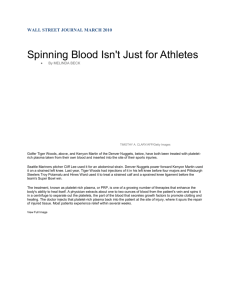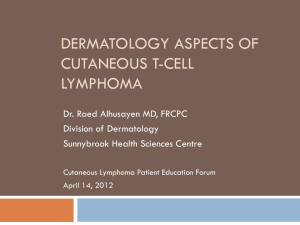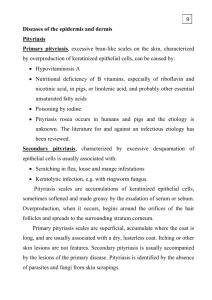PITYRIASIS RUBRA PILARIS (PRP) Etiology
advertisement
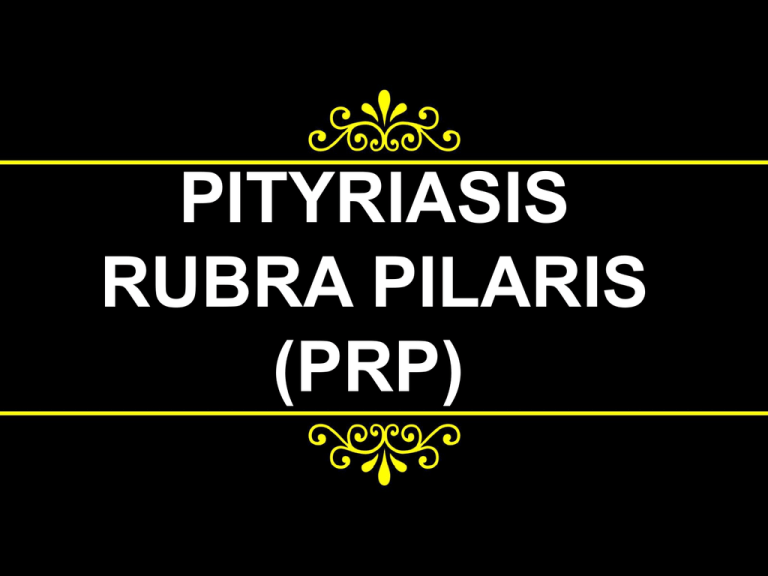
PITYRIASIS RUBRA PILARIS (PRP) Etiology • The etiology is unknown • A familial form of the disease exists, with an autosomal dominant inheritance pattern; however, most cases are sporadic • One hypothesis is that pityriasis RPR may be related to an abnormal immune response to an antigenic trigger • Case reports have described PRP occurring after streptococcal infections • The incidence has been reported to be 1 case in 3500-5000 patients presenting to dermatologic clinics • PRP occurs equally among men and women • The familial form typically begins in early childhood • The acquired form has peaks in the first and fifth decades of life, but it can begin at any age Clinically • The familial form of PRP has a gradual onset, whereas the acquired form has an acute onset • The disease typically spreads in a craniocaudal (from head to body) direction • PRP is characterized by orange-red or salmon-colored scaly plaques with sharp borders, which may expand to involve the entire body • A characteristic feature is presence of islands of unaffected skin within the plaques • The plaques are formed of follicular hyperkeratotic papules • Palmoplantar keratoderma occurs in most patients and tends to have an orange hue • Painful fissures may develop in patients with palmoplantar keratoderma • Nail changes include distal yellow-brown discoloration, subungual hyperkeratosis, longitudinal ridging, nail plate thickening, and splinter hemorrhages • Mucous membranes: Patients may complain of pain and irritation in the mouth. Mucous membrane changes include a diffuse whitish appearance of the buccal mucosa, lacy whitish plaques, grayish-white papules and plaques, erythema, or possible erosions • Pruritus, although not a major symptom, may occur in the early stages of the disease Griffiths classification Type C/P I-Classic adult (>50 of cases) As mentioned before II-Atypical adult (5% of cases) Follicular hyperkeratosis and ichthyosiform lesions on the legs, sparse scalp hair Distrib. Generalized Generalized Course Often resolves within an average of 3y Long duration (> 20 y) Type C/P Distrib. Course III-Classic Similar to type I GeneralOften juvenile but appears in ized resolves (10 of year 1 or 2 of life within an cases) average of 1-2 y Type IV- Circumscribed juvenile (25% of cases) C/P Distrib. Prepubertal Localichildren; wellzed demarcated scaly, erythematous plaques on the elbows and knees, resembling localized psoriasis Course Some cases clear in the late teens Type VAtypical juvenile (5% of cases) C/P Distrib. Course Begins in first few Generyears, accounts for alized most familial cases; follicular hyperkeratosis, scleroderma-like appearance of the hands and feet Chronic course Histopathology • Folliculat Plugging: The follicles are filled with dense, horny (keratinous)plugs • There are foci of parakeratosis in the perifollicular shoulder and in the epidermis between the follicles • At other sites, a basket-weave hyperkeratosis overlies a prominent granular layer and there is little parakeratosis •Although the epidermis is acanthotic, it is not, as in psoriasis, thinned above the dermal papillae, and there is no tendency for polymorphs to invade the epidermis •There is a dermal infiltrate of lymphocytes and histiocytes Treatment • Currently, oral retinoids are the first line of therapy. Isotretinoin has been reported to be of value, although a comprehensive review suggests that acitretin (0.5 to 0.75 mg/kg per day) may be more effective in clearing lesions. Accordingly, most patients are treated first with acitretin today • Therapy with methotrexate(10 to 25 mg weekly, intramuscularly or orally, in divided doses, once a week) has shown variable rates of success • Some cases respond well to photochemotherapy, some may flare, and others require combination treatment with retinoids or methotrexate • Several cases of adult-type PRP showed significant clearance in 2 to 4 weeks with cyclosporine(5 mg/kg/day) Although most studies show lack of efficacy • Some patients are helped by azathioprine (100 to 150 mg/day) , but this effect is also inconsistent

